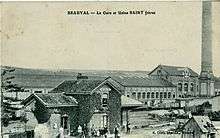Réseau Albert
| Réseau Albert | |||||||||||||||||||||||||||||||||||||||||||||||||||||||||||||||||||||||||||||||||||||||||||||||||||||||||||||||||||||||||||||||||||||||||||||||||||||||||||||||||||||||||||||||||||||||||||||||||||||||||||||||||||||||||||||||||||||||||||||||||||||||||||||||||||||||||||||||||||||||||||||||||||||||||||||||||||||||||||||||||||
|---|---|---|---|---|---|---|---|---|---|---|---|---|---|---|---|---|---|---|---|---|---|---|---|---|---|---|---|---|---|---|---|---|---|---|---|---|---|---|---|---|---|---|---|---|---|---|---|---|---|---|---|---|---|---|---|---|---|---|---|---|---|---|---|---|---|---|---|---|---|---|---|---|---|---|---|---|---|---|---|---|---|---|---|---|---|---|---|---|---|---|---|---|---|---|---|---|---|---|---|---|---|---|---|---|---|---|---|---|---|---|---|---|---|---|---|---|---|---|---|---|---|---|---|---|---|---|---|---|---|---|---|---|---|---|---|---|---|---|---|---|---|---|---|---|---|---|---|---|---|---|---|---|---|---|---|---|---|---|---|---|---|---|---|---|---|---|---|---|---|---|---|---|---|---|---|---|---|---|---|---|---|---|---|---|---|---|---|---|---|---|---|---|---|---|---|---|---|---|---|---|---|---|---|---|---|---|---|---|---|---|---|---|---|---|---|---|---|---|---|---|---|---|---|---|---|---|---|---|---|---|---|---|---|---|---|---|---|---|---|---|---|---|---|---|---|---|---|---|---|---|---|---|---|---|---|---|---|---|---|---|---|---|---|---|---|---|---|---|---|---|---|---|---|---|---|---|---|---|---|---|---|---|---|---|---|---|---|---|---|---|---|---|---|---|---|---|---|---|---|---|---|---|---|---|---|---|---|---|---|---|---|---|---|---|---|---|---|---|---|---|---|---|---|
Legend
| |||||||||||||||||||||||||||||||||||||||||||||||||||||||||||||||||||||||||||||||||||||||||||||||||||||||||||||||||||||||||||||||||||||||||||||||||||||||||||||||||||||||||||||||||||||||||||||||||||||||||||||||||||||||||||||||||||||||||||||||||||||||||||||||||||||||||||||||||||||||||||||||||||||||||||||||||||||||||||||||||||
The Réseau Albert was a set of railway lines in France from 1889–1955, part of the Chemins de fer départementaux de la Somme. There were four lines in the Réseau Albert system:- Albert - Doullens, Albert - Ham, Fricourt - Montdidier and Offoy - Ercheu. All lines were built to 1,000 mm (3 ft 3 3⁄8 in), metre gauge. The entire system extended to 190 kilometres (120 mi).
Background
In France, the building of railways was controlled by the Government. This avoided the duplication of routes that was seen in the UK and meant that the large cities and towns were connected. The citizens of the smaller towns and villages also wanted railways to be built to connect them to the network. The departments were given authority to oversee the construction of these minor lines, some of which were built to standard gauge and others were built to metre gauge. The Réseau des Bains de Mer system came under the control of the Somme Department.
Albert - Doullens line
The 42.35 kilometres (26.32 mi) line between Albert and Doullens opened in three stages. Doullens - Beauval on 15 November 1888, Beauval - Beauquesne on 14 February 1889 and Beauquesne - Albert on 3 August 1891. The final section of line into Doullens was dual gauge, with the metre gauge rails laid inside the standard gauge rails of the Chemin de Fer du Nord's Amiens - Frévent à Gézaincourt line. An example of this method can be found on the Chemin de Fer de la Baie de Somme line. It closed to passengers on 1 July 1949 and also to freight north of Acheux at the same time. The section from Albert to Acheux closed to freight on 31 December 1949.[1]
In preparation for the Battle of the Somme in 1916, branches were built from Martinsart to Aveluy, Thiepville Woods and Authuille to enable supplies of munitions to be brought up.[2]
Stations
- Albert
- Aveluy
- Martinsart
- Mesnil-Martinsart
- Auchonvillers
- Mailly-Mallet
- Bertroncourt
- Acheux-Varennes
- Léalvillers
- Louvencourt
- Vauchelles
- Raincheval-Arquèves
- Beauquesne
- Beauval

A textile factory at Beauval was a source of freight for the railway.
- Doullens
Albert - Ham line
The 75 kilometres (47 mi) line between Albert and Péronne opened on 1 April 1889. The line between Péronne and Ham opened on 24 October 1889, and closed in 1949.[1]
Stations
- Albert (halt)
- Bécordel-Bécourt
- Fricourt
- Guillemont
- Fill
- Maurepas
- Hem-Monacu
- Feullières
- Cléry-sur-Somme
- Péronne-Flamicourt
- Mesnil-Bruntel
- Mons-en-Chaussée
- Athies
- Motto
- Monchy-Lagache
- Fletz-Douv
- Quivières
- Moligneaux
- Matigny
- Offoy
- Canisy
- Ham
Fricourt - Montdidier line
The line between Rosières and Montdidier opened on 25 June 1889, and the line between Rosières and Fricourt opened on 26 October 1889. It was 53 kilometres (33 mi) long and closed to passengers and freight south of Froissy on 15 April 1949. The section to Froissy closed to freight on 31 December 1949.[1] At Froissy, the 600 millimetres (2 ft 0 in) gauge Chemin de Fer Froissy-Cappy-Dompierre had a transfer facility.[3]
Stations
- Rosières-en-Santerre
- Froissy
- Montdidier
Offoy - Bussy line
The 20 kilometres (12 mi) line between Offoy and Bussy opened on 14 July 1890, and closed on 1 July 1949. After this date, an occasional freight service was operated until 1955. The last few kilometres of the line were in Oise.[1]
Stations
- Ercheu
- Bussy
References
Information on the French article has been used, based on translation by Freetranslation.com
- 1 2 3 4 "Les Chemins de Fer Secondaires de France". Fédération des Amis des Chemins de fer Secondaires. Retrieved 2008-02-13.
- ↑ "Battle Histories > Western Front > The Battles of the Somme 1916 > Preparations". The Long, Long Trail. Archived from the original on 2007-10-13. Retrieved 2008-02-13.
- ↑ Organ, John (2002). Northern France Narrow Gauge. Midhurst: Middleton Press. ISBN 1-901706-75-3.